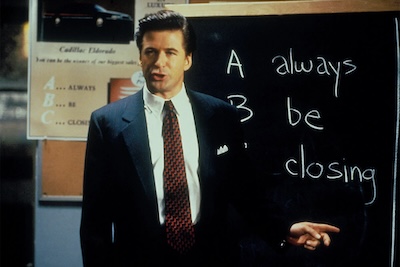Sirens may look glossy, beautiful, and bright on the outside, but there is something dangerously dark scratching to get out from underneath. Don’t let the colors of the gorgeous costumes or the stately beachy production design fool you–something is rotten in the state of Port Haven. Director Nicole Kassell has never shied away from dark, heavy material, but she gives her episodes of this Netflix hit a twisty foreboding flair.
There are shows that lean into the binary of drama and comedy, but Sirens wades in that mixture of it. I described it as a “cornucopia of tones” to the Emmy-winning director as we chatted about how to establish this very separated, very elite world. Port Haven feels like a place that would make you feel seen in all the wrong ways if you happened to stumble into its nest.
“I love world building from having to work on Watchmen and The Baby, so everything I do is always inspired by the writing and the script had this tone,” Kassell says. “It describes the first impression of Michaela as a goddess, and then the overt comedy and the Lily Pulitzer world through the eyes of Devon. I knew right away that I wanted to make a heightened world, because I wanted to make it genre. We have The Perfect Couple, we have The White Lotus, and Big Little Lies, so there is a lot we can pull from in terms of a critique of the very rich. There was a challenge to me of how to make this stand out. The visuals should never overplay the story.
Because we have the title of Sirens and the theme of sirens, it allowed me to kind of go into that heightened tone immediately. I love that you can shift from this melodramatic, goregeous release of a bird to the guts of Buffalo and an absurd Edible Arrangement to the perfect, prim world of Simone. When Devon swims up shore, there’s this knock down drag out sister fight, and underneath it, there’s real stakes and a complicated, beautiful relationship.”
When Devon arrives to retrieve her sister, Simone, to take care of their ailing father, Devon notices the aura of control wafting in off the crashing water. A specific word keeps getting tossed around, but no one addresses it head on…
“One of the key words that came up early in the description was the word ‘cult,’ especially after Devon brings it up,” she says. “Is it actually a cult? Once we had that world to allude to in the costumes and production design, one of the words that I gave to everyone to lean into was ‘uncanny.’ We could thread a needle once everyone was on the same page, and then we could play with jump scares and give you the feeling like you’re being watched.”

After Devon crashes Labor Day weekend, Simone tries to stash her in the guest house before Michaela (or Kiki) finds out, but Julianne Moore’s character magically appears without warning (she tends to do that throughout all five episodes). We can almost feel Milly Alcock’s temperature rising, because this is the worst thing she never thought would happen: her old world crashing headfirst into the life that she has built for herself. Kassell stages the introduction simply, but watch how one of the other women is almost always in the frame as another is speaking.
“It’s funny because it’s just three people in a room talking, but those can be the scariest scenes because there’s nothing to hide behind,” Kassell says. “It would be so tempting to place people and just get one shot after the other, but this is about a triangle since it’s about shifting alliances. I needed to get out of the way of the words and the performances, and it’s so critical when Simone walks over to Kiki–that says everything. Michaela keeps teleporting into the space, and what I adore when Michaela approaches Devon, she speaks to her in exactly the same tone that she talks to the new birtd, Winston. This is how she greets people and she’s used to this gentle endeearing tone that totally fails on Devon. Devon is the only person we seen in the show, other than Peter and Jose, who stands up to her. Jose has to do it in this delicate, complicated way, but Devon will never, ever kowtow to this bitch. Simone’s brain is sizzling in this moment.”
How we see each other by the ones we love and the ones we want to impress is an underlying theme in Sirens, and Kassell represents that visually in two moments in the first episode. Michaela and Simon, when the series begins, have, what they think, is an unshakable bond. Kassell positions the camera directly in their faces, and before we know it, we are under a spell. The visual cue was important to establish for one of the most pressing themes of Sirens, and Kassell reveals how she was inspired by the work of Jonathan Demme.
“The first time that something unique happens with them visually is after the sexting Peter moment before they come down the grand staircase, and we cut to the exteme closeups,” she says. “That’s come to be called ‘the siren shot.’ I didn’t call it that while we were shooting, but the whole idea was how to come up with a visual language that shows how we hear the siren song. Michaela is looking in, and I have her staring into the lends as if we are Simone and she’s looking into our eyes. I was inspired by Jonathan Demme who used it in The Silence of the Lambs when Anthony Hopkins is talking to Jodie Foster as Clarice when he’s drawing her in. The DP, Gregory Middleton, and I had the privilege of knowing Jonathan, and he came to mind when we were looking to do something special. There’s also a sequence in Jane Campion’s short film, Peel, where a child is looking at a parent and studying her face. It was exciting to see how the following directors adopted that into each of their episodes.”
Sirens is streaming now on Netflix.









